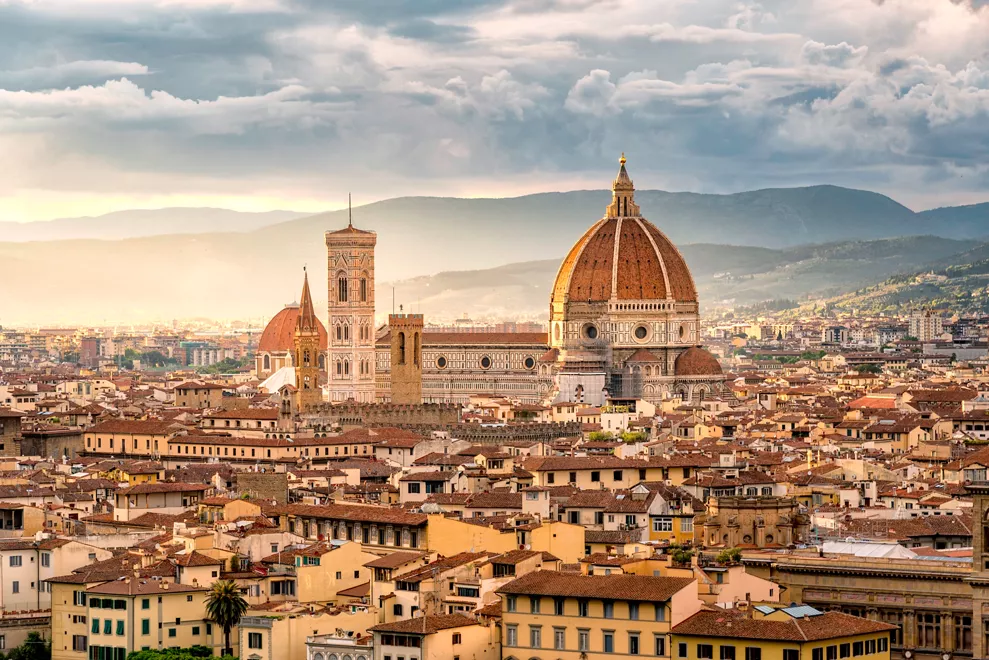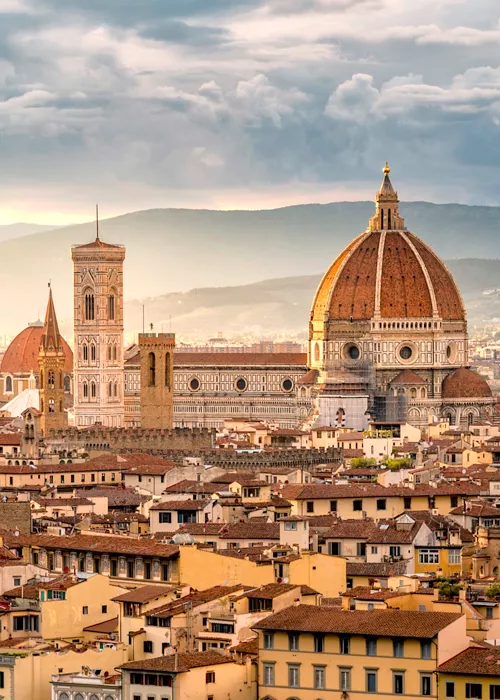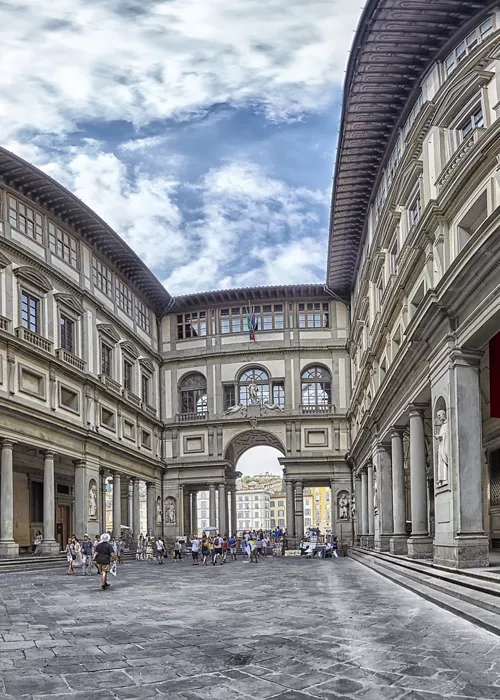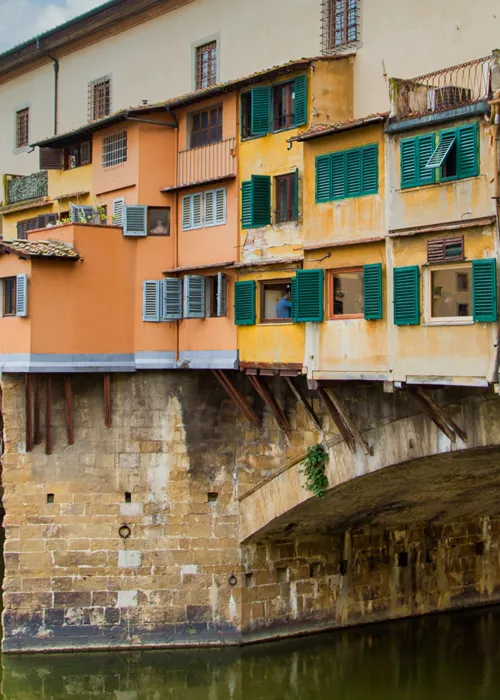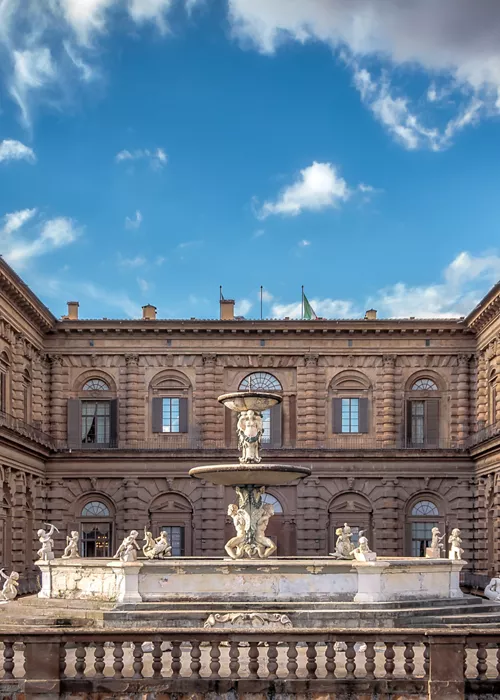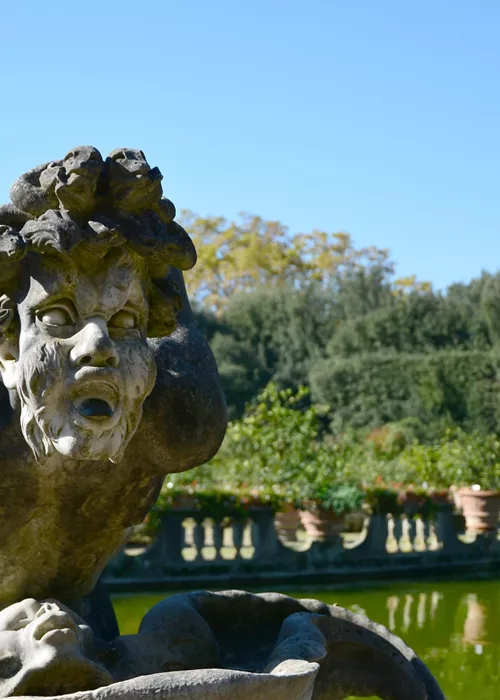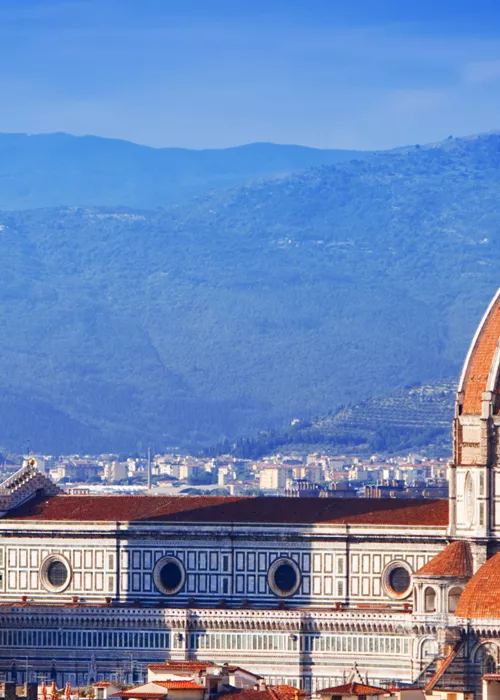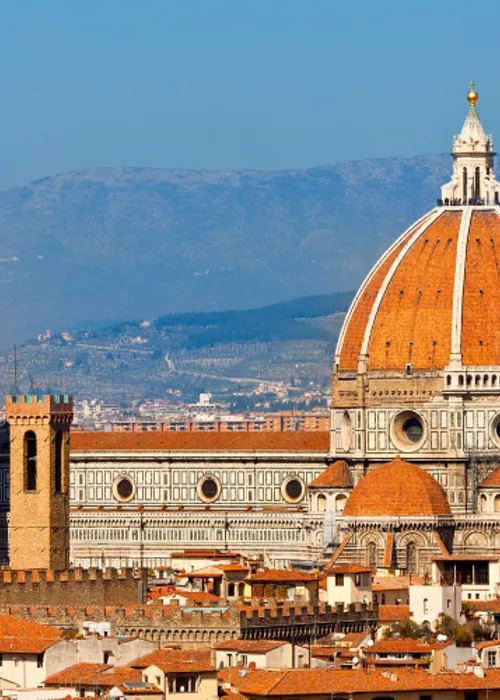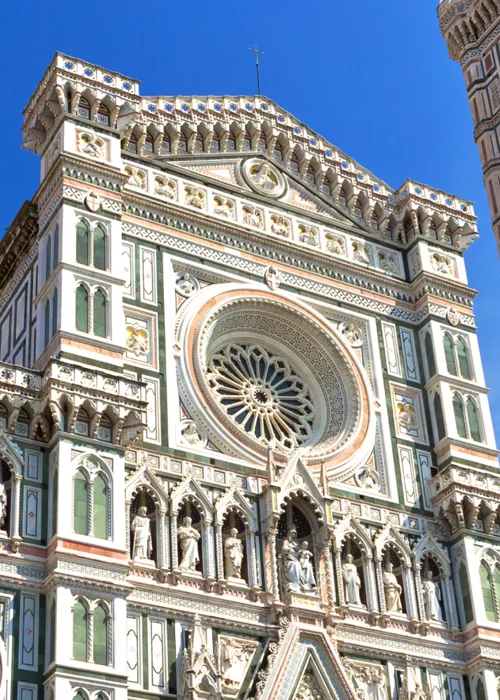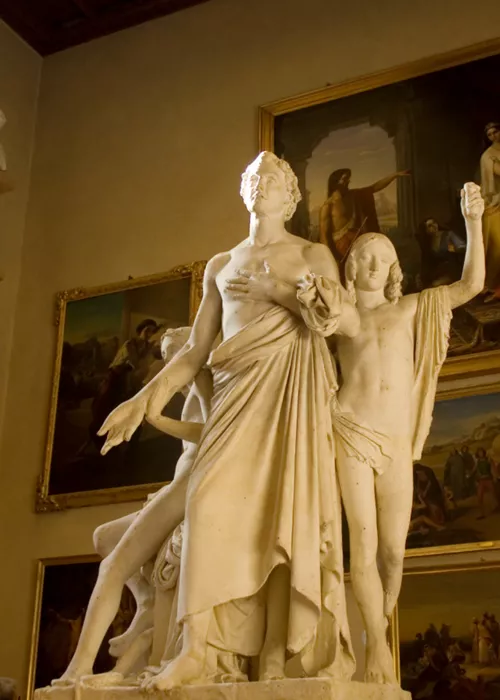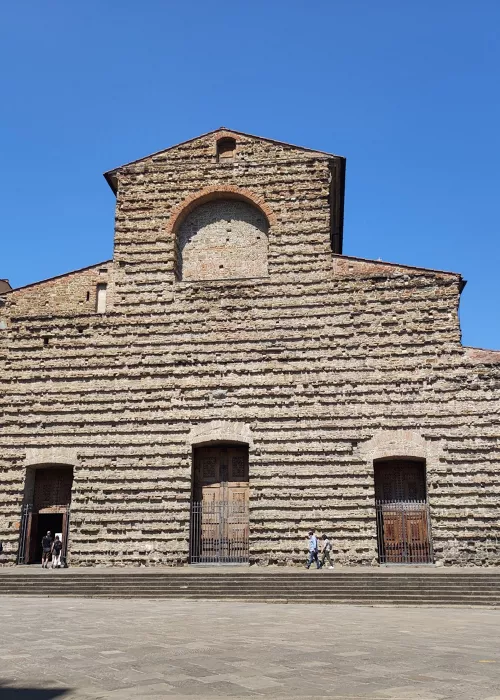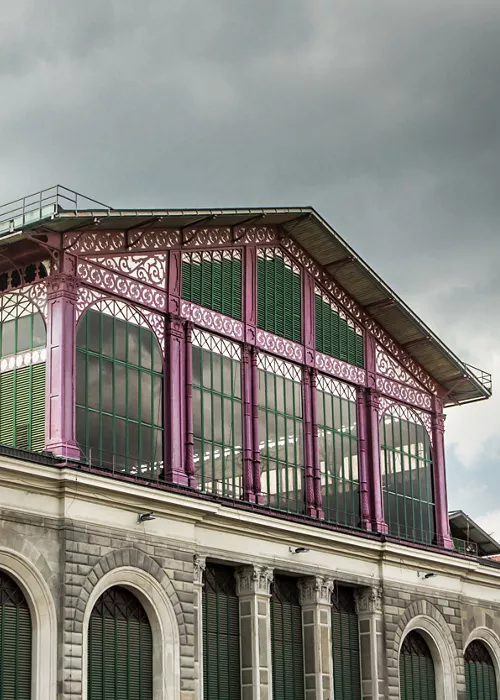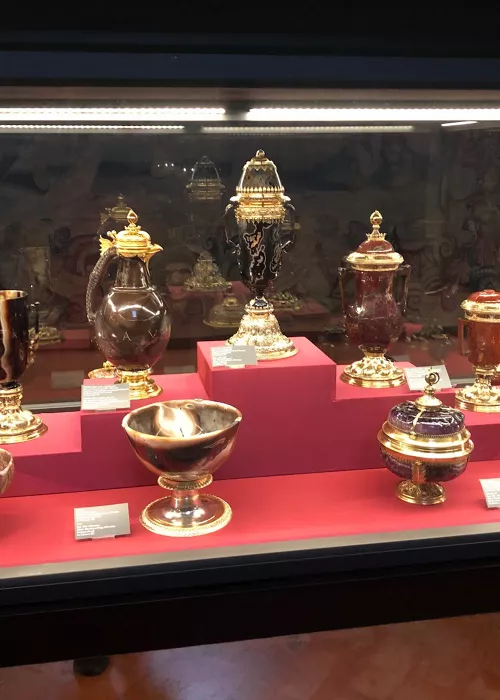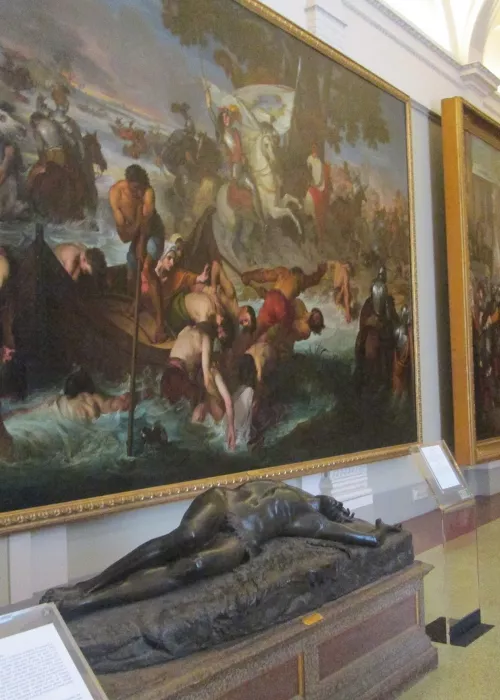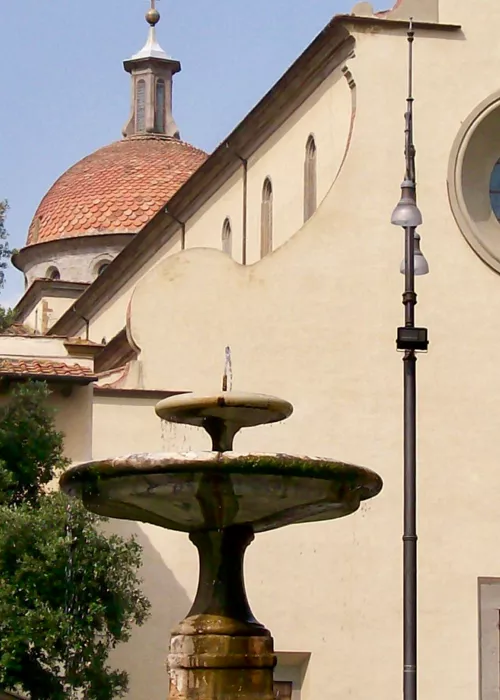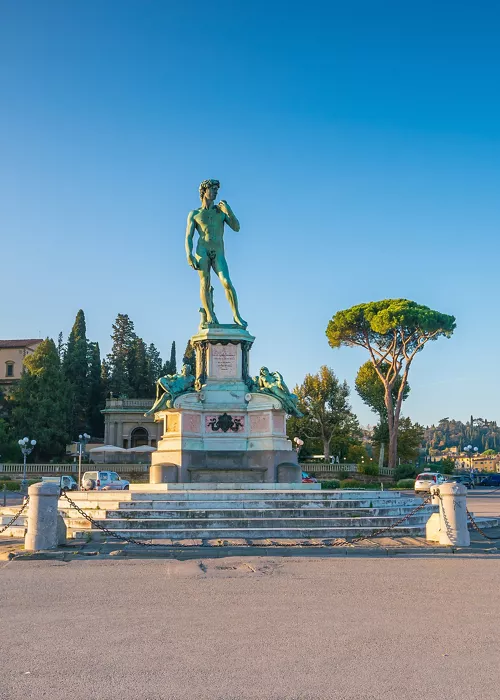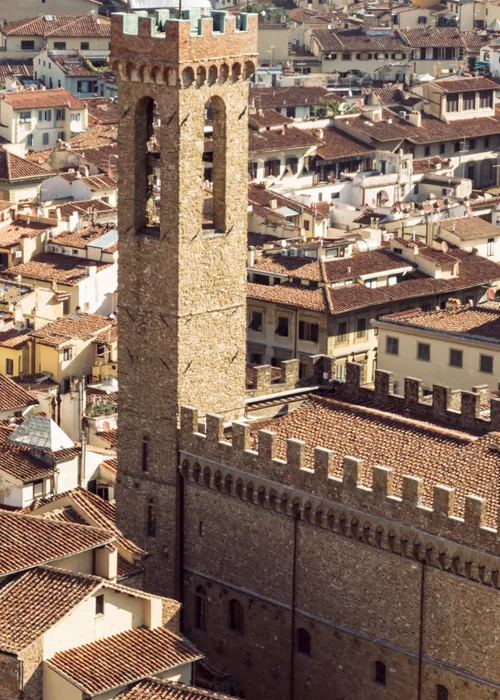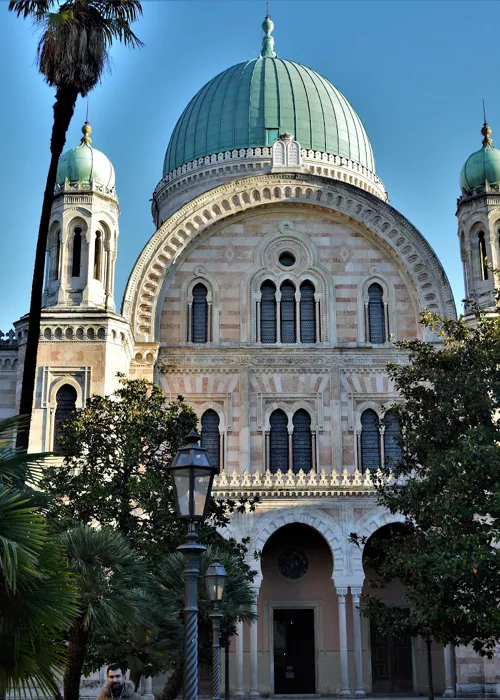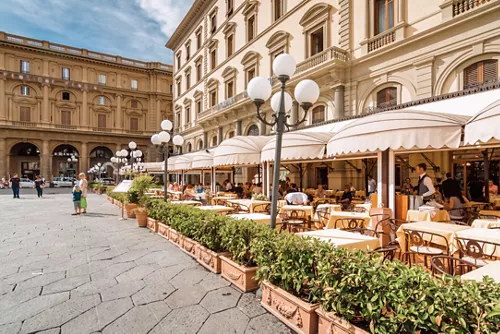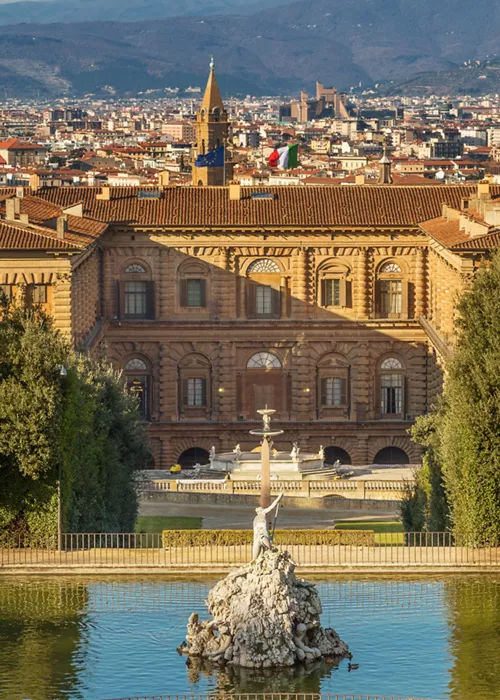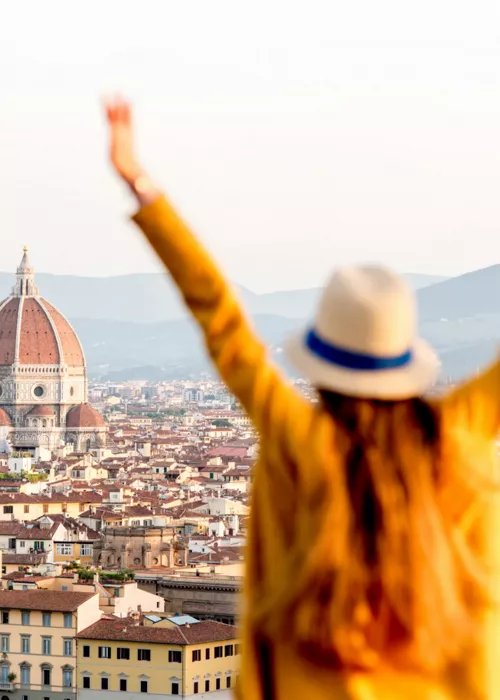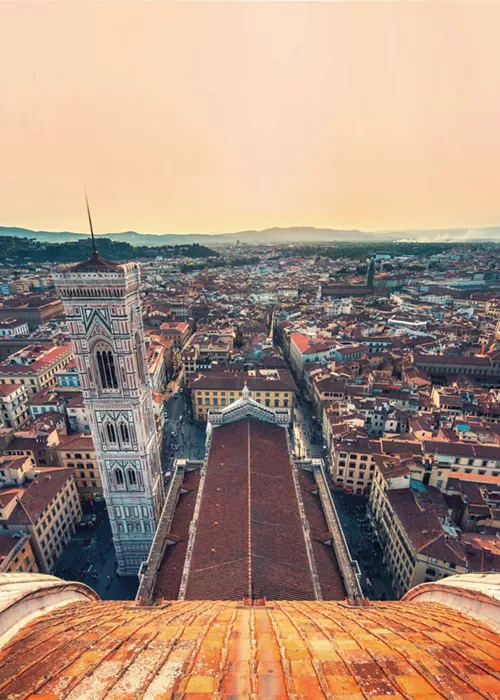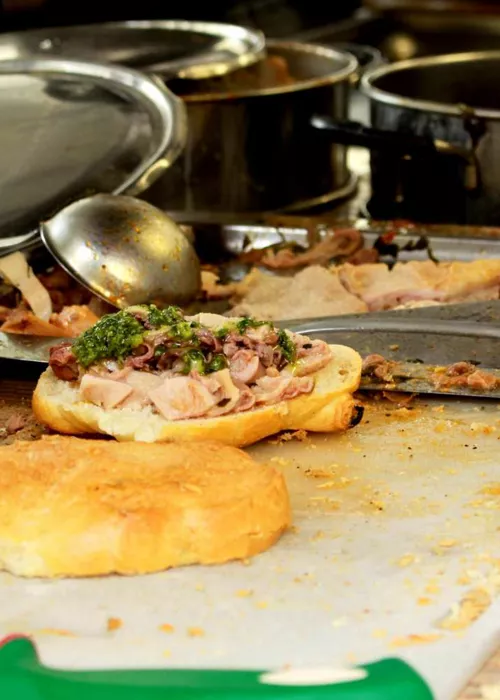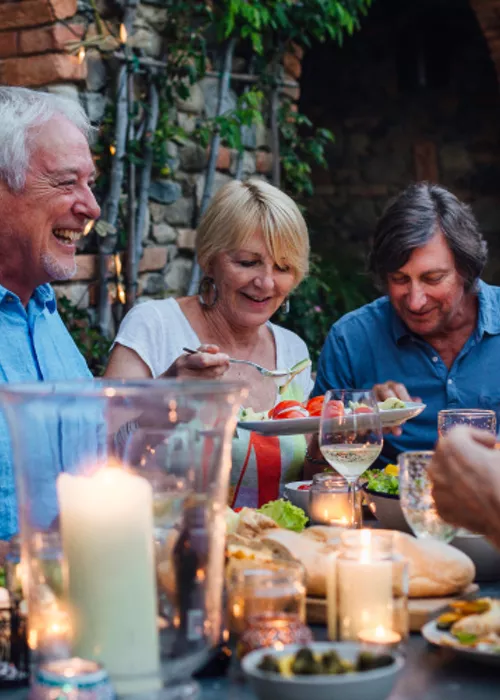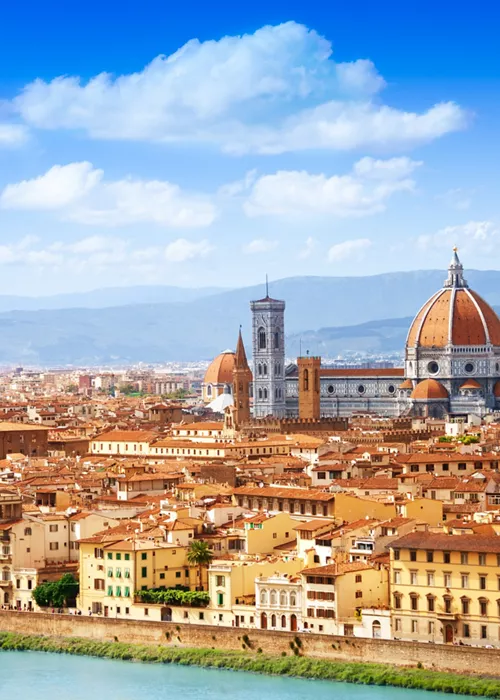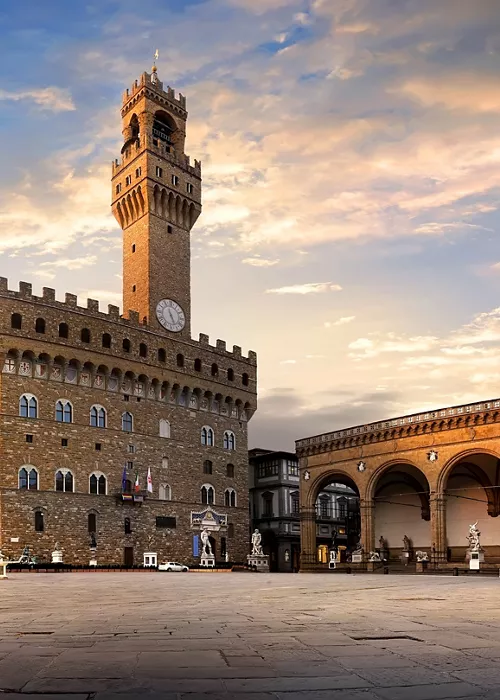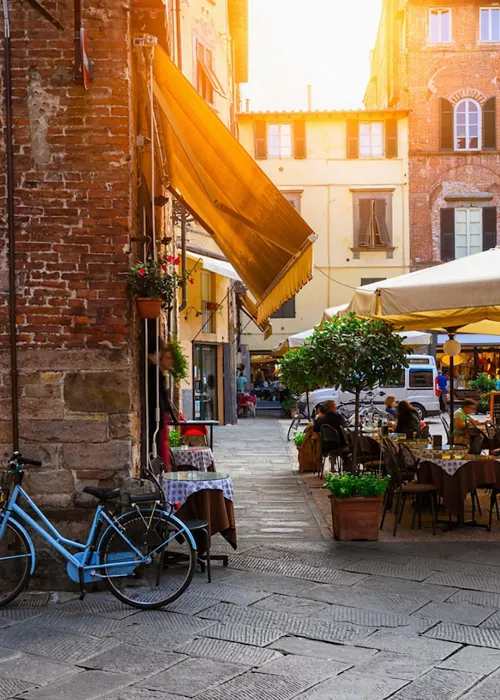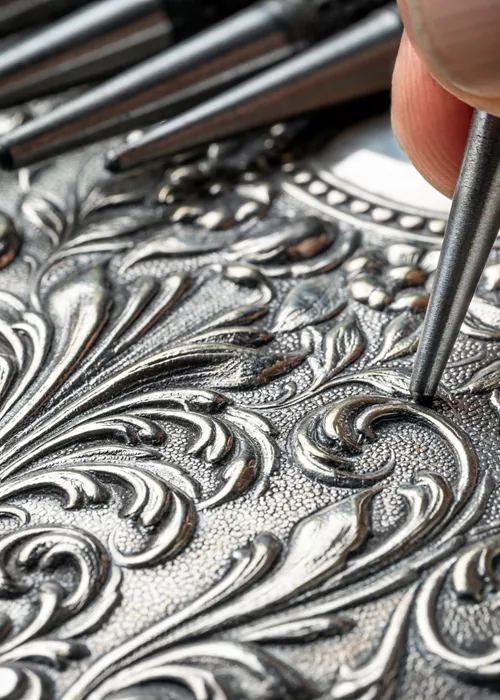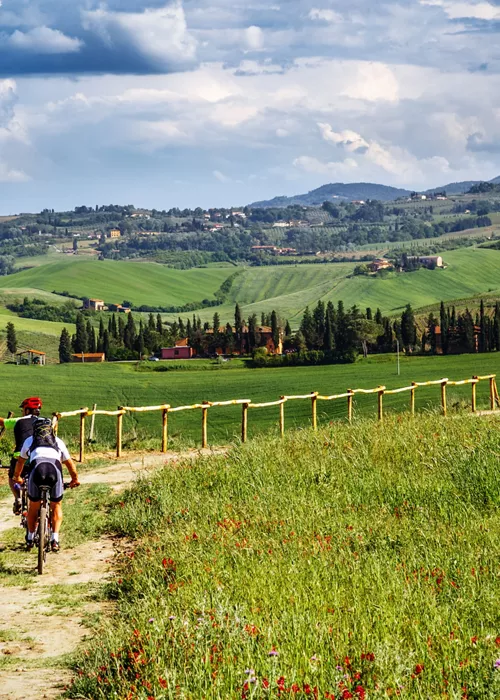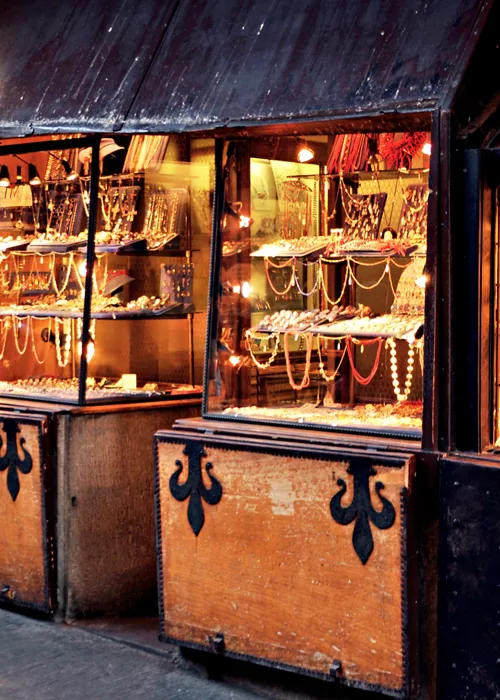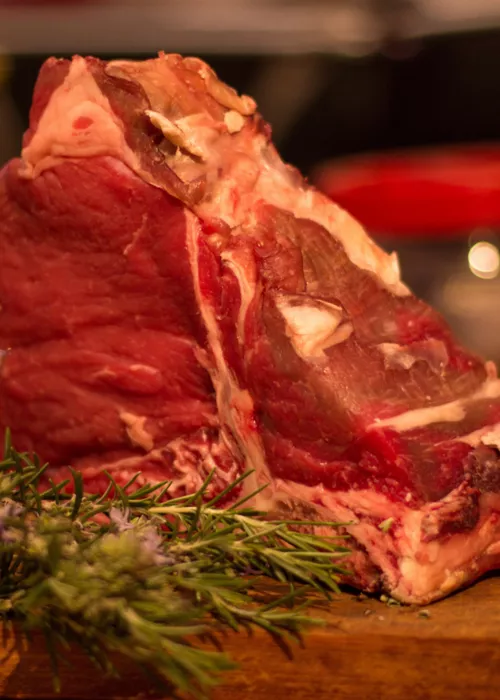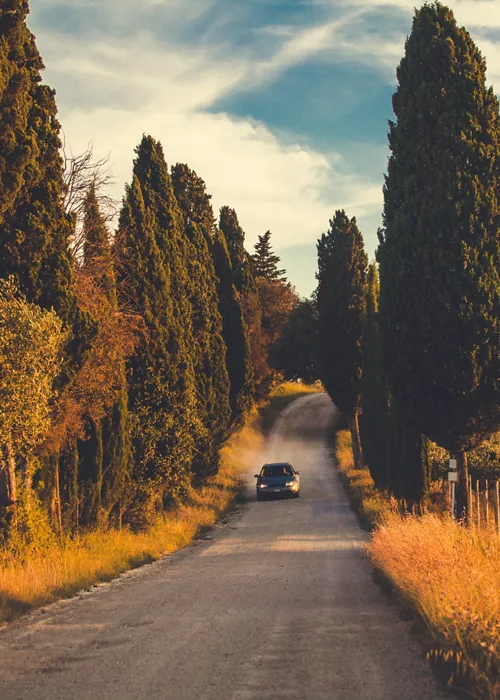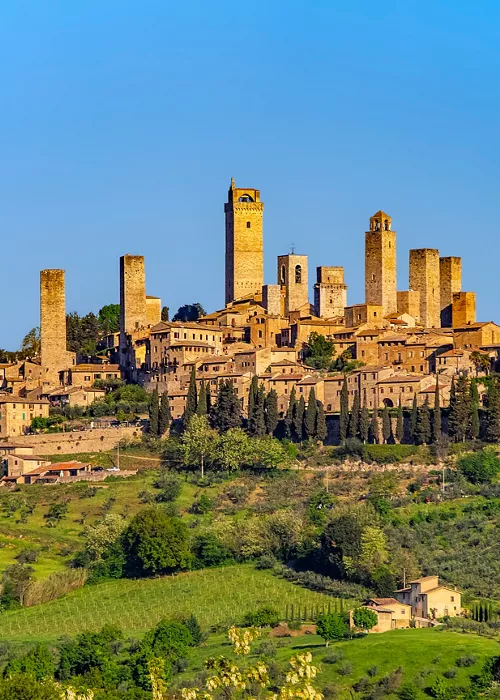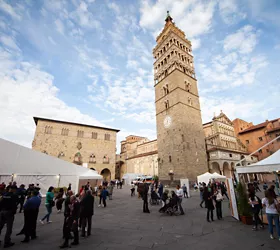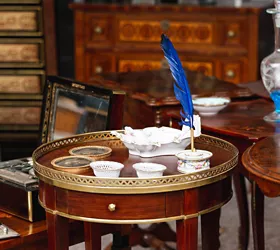Discovering Florence, the city that symbolises the Renaissance
4 minutes
Home to one of the most important museums in the world, the majestic Uffizi Gallery, it enthrals with its architectural treasures, historic churches, art galleries brimming with masterpieces, and romantic bridges crossing the Arno.
The banks of the Florentine river themselves offer splendid views, and all around rise the magical Tuscan hills.
Here, the artistic heritage is unparalleled, or nearly unparalleled in the world, but we feast in honour of the noble and varied Tuscan traditions of gastronomy and wine-making.
History and curious facts about Florence
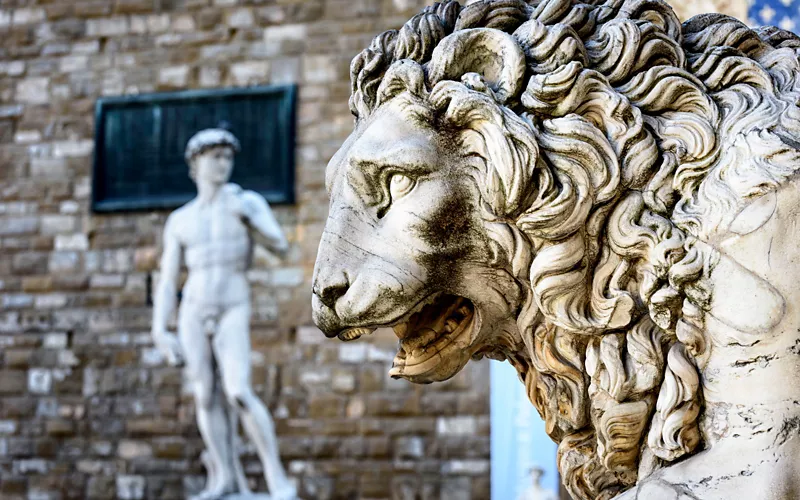
It is always impossible to understand a city without knowing its past, and in this sense the history of Florence is particularly significant.
The city originated as an Etruscan fortified area dependent on Fiesole. Mediaeval Florence became an important centre of trade and passage, taking part in the famous wars between Guelphs and Ghibellines, i.e., between supporters of the Pope and those of the Emperor, and became the most important city in Tuscany, with flourishing activities from manufacturing to finance. Gradually, cultural activities also developed: Dante Alighieri and his immortal Divine Comedy, the greatest masterpiece of Italian literature, was born here.
At the beginning of the 15th century, Florence became the birthplace of the Italian Renaissance and saw the rise of the powerful Medici family, who remained at the head of the city for 350 years. Lorenzo de' Medici, called the Magnificent, forever marks the course of art history with his patronage.
The Risorgimento in Florence brought important changes: the city became the capital of the Kingdom of Italy, from 1865 to 1871, and the seat of the nation's first Parliament.
What to see in Florence: places not to be missed
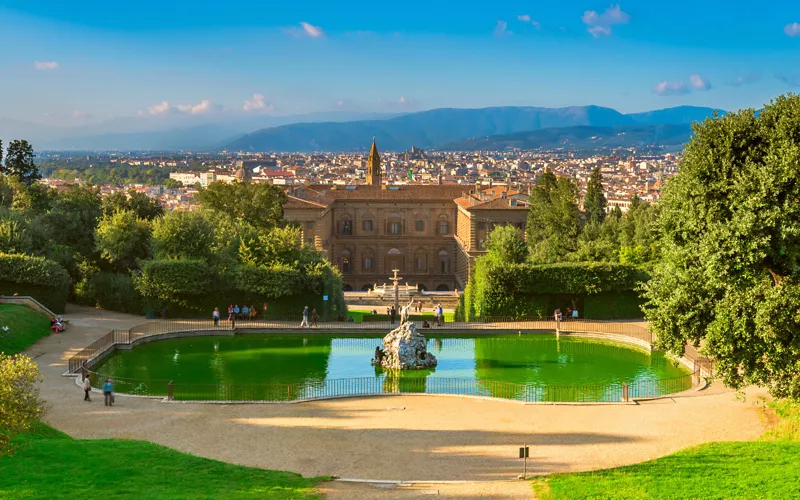
Of course, go to the Galleria degli Uffizi, recently restored to new splendour, modernised, redesigned and now simply among the richest and most important collections of paintings in the world: are you familiar with Botticelli's Primavera?
Then go over the Ponte Vecchio and reach the Palazzo Pitti, bought in 1550 by Cosimo de' Medici: it owes its name to its first owner, the banker Luca Pitti, and is now home to four esteemed museums: the Grand Dukes' Treasure, the Palatine Gallery and the Imperial and Royal Apartments, the Gallery of Modern Art and the Museum of Fashion and Costume.
The building is part of the museum complex that also includes a wonderful garden, the Giardino di Boboli, where you can stroll around freely.
Finally, admire Piazza del Duomo, where you will be enraptured by the Basilica of Santa Maria del Fiore, with Brunelleschi's majestic cupola and Giotto's Bell Tower, a masterpiece of Gothic architecture 85 metres high and with 400 steps.
And that's not all. Florence boasts an incredible museum in the form of the Galleria dell'Accademia, home to the world's largest number of sculptures by Michelangelo, including the world-famous David.
And speaking of Michelangelo, you should also pay a visit to the Basilica of San Lorenzo, which houses the most beautiful Sacristy in the world, with sculptures by the greatest sculptor of all time.
But Florence is also the vivaciousness of its squares, its streets, its markets, such as the Mercato Centrale, where you should go to eat at least once in your life, or the Mercato di San Lorenzo.
Ideas on what to do in Florence
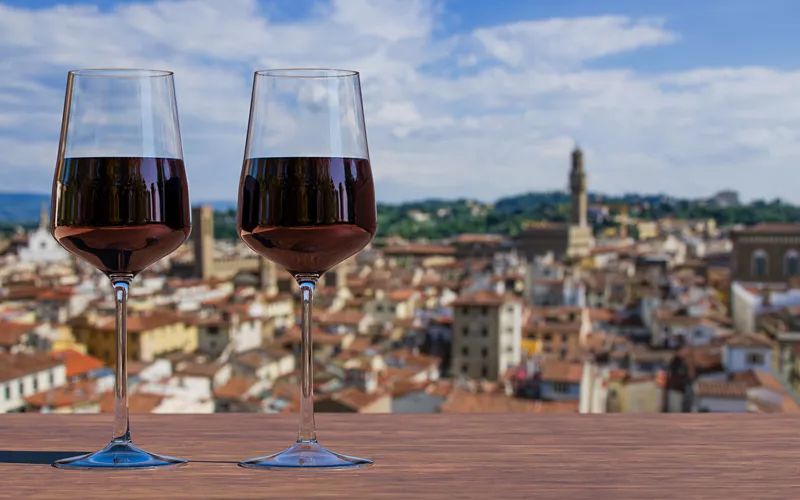
From strolls in the historic centre to shopping, from aperitifs in Piazza Santo Spirito to an exploratory tour of the San Niccolò artists' quarter: Florence is an endless well of activity, so you should carve out some time to wander around without a precise destination: you will be enraptured.
And the home of Galileo Galilei is worth a visit, if only for its location along the Costa San Giorgio, one of the marvellous roads that lead from the historic centre of Florence up into the hills and into the countryside, then Piazzale Michelangelo is the ideal place to enjoy the city from above and imprint indelible memories in your hearts.
What to eat in Florence: 5 specialities
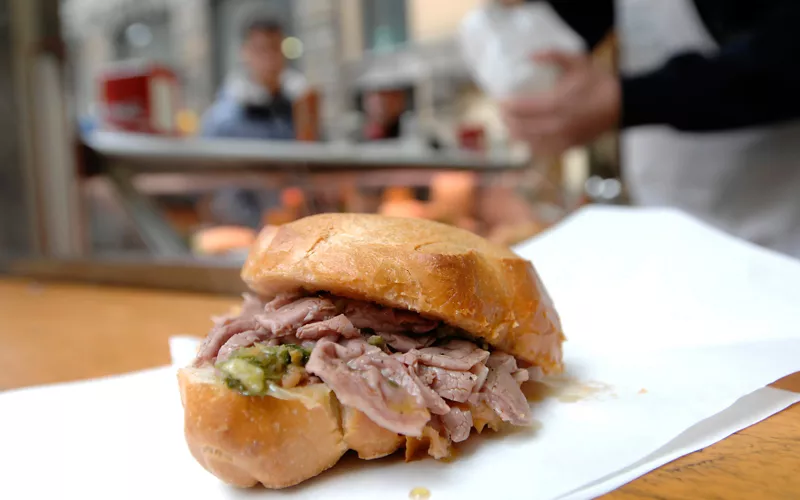
Tuscan cuisine is very rich, with its tradition centuries old. What to eat in Florence? You are spoilt for choice.
- You can find lampredotto in sandwiches along the streets of the centre or at food markets: it is made from one of the four veal stomachs and is an experience for seasoned palates.
- Ribollita is an institution, a soup of stale bread and vegetables that will win everyone over.
- Fagioli all'uccelletto are a side dish with a tomato sauce that is by no means light but is certainly very tasty.
- The Florentine steak is a delicious cut of sirloin, but more than that: it is an icon of the city.
- Then be brave and try the trippa alla fiorentina, a tripe dish rich with vegetables.
Unusual places in Florence
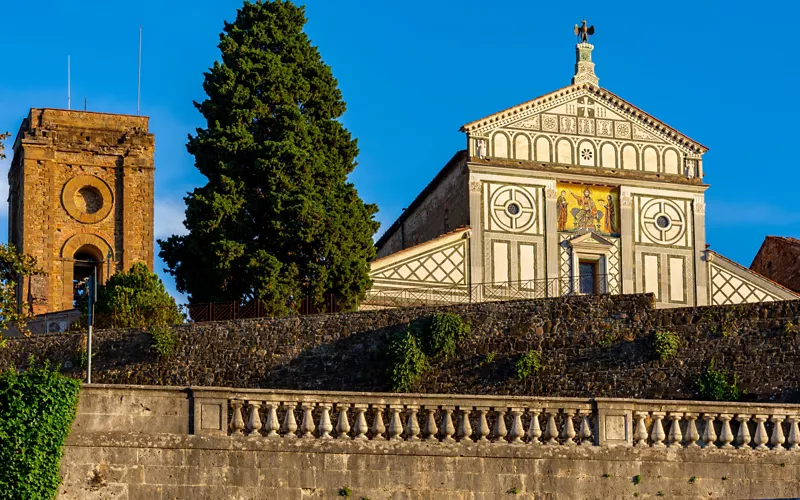
As well as the usual tourist itineraries, there are also unusual places in Florence to visit at least once One of these is the Museo Nazionale di Bargello, recognised in 1865 as the first Italian museum dedicated to medieval and Renaissance art. Its collection of statues is considered among the most important in the world.
This is followed by the great Synagogue of Florence, inaugurated in 1882. With its copper-green dome, it is a landmark of the Florentine panorama, where one of the most beautiful views of the city can be enjoyed.
Lastly, the Basilica of San Miniato al Monte dominates the city from above and is a perfect example of the Florentine Romanesque style.

